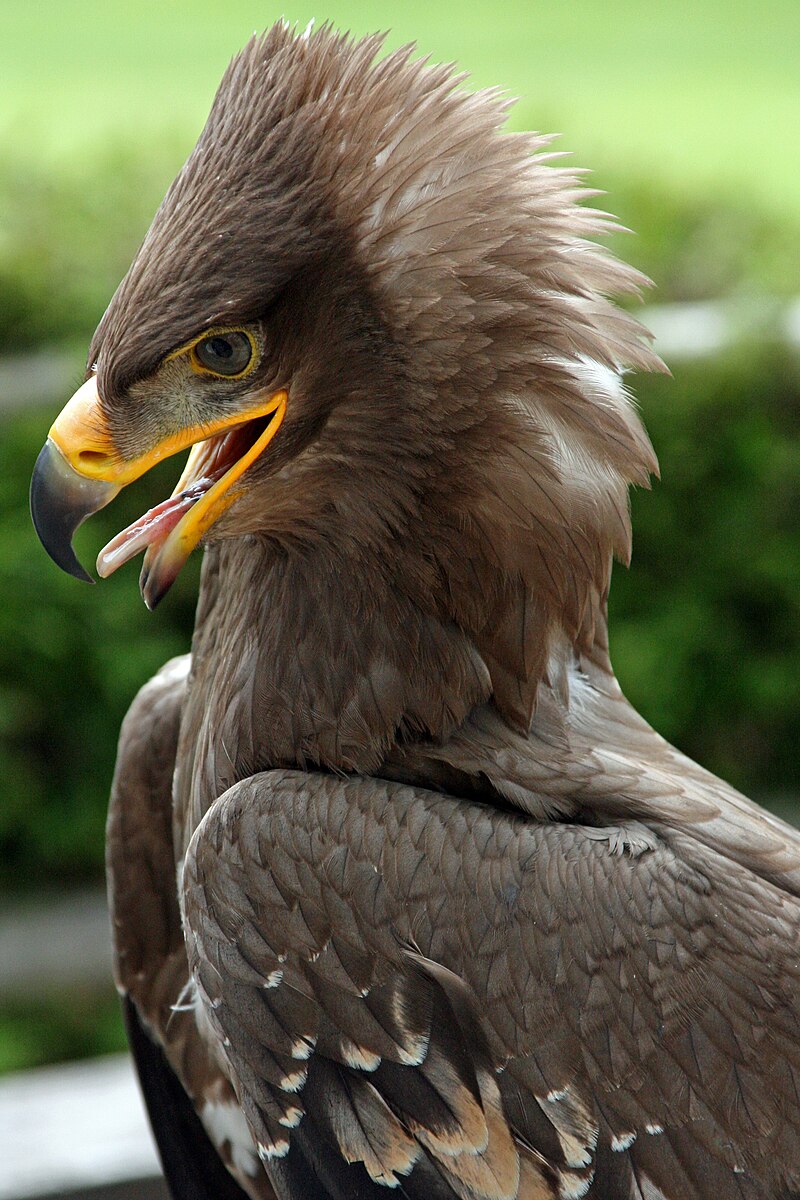Steppe eagles, scientifically known as Aquila nipalensis, are large birds of prey that inhabit the vast grasslands and semi-desert regions of Central Asia. These majestic raptors are known for their impressive size, fierce expression, and specialized hunting techniques. But how exactly do these solitary birds come together to mate and reproduce? In this comprehensive blog post, we’ll delve into the fascinating details of steppe eagle mating behavior.
Monogamous Pairing
Steppe eagles are monogamous, meaning they form long-lasting pair bonds and mate with the same partner for life. This behavior is crucial for the successful rearing of their young, as both the male and female eagle play vital roles in the nesting and incubation process.
Courtship Displays
 Image source: Steppe Eagle by Fimb
Image source: Steppe Eagle by Fimb
The courtship rituals of steppe eagles are a sight to behold. As the breeding season approaches, typically from April to July, the birds engage in a series of elaborate displays to attract and bond with their mates. These displays may include:
- Aerial acrobatics: The male and female eagles perform intricate aerial maneuvers, such as swooping, diving, and soaring in synchrony, to demonstrate their strength and agility.
- Vocalizations: Steppe eagles produce a range of calls, including high-pitched whistles and deep, guttural screeches, to communicate with their potential mates.
- Nest building: Both the male and female eagles work together to construct or repair their nest, which is typically located on the ground or on a rocky outcrop. This collaborative effort strengthens the pair bond.
Mating and Egg Laying
Once the pair has established a strong bond, the female steppe eagle will lay one to four eggs, which are then incubated for approximately 45 days. Unlike some other eagle species, steppe eagles do not exhibit cainism, a behavior in which the larger, older siblings prey on the smaller members of the family. As a result, each nest usually produces two or three healthy fledglings.
Parental Care and Fledgling Development
Both the male and female steppe eagles play an active role in the incubation and rearing of their young. The parents take turns sitting on the eggs and providing food for the hatchlings. Once the chicks have hatched, the parents continue to feed and protect them for around 60 days, until the fledglings are capable of leaving the nest and becoming independent.
Seasonal Adaptations and Hunting Strategies
Steppe eagles have evolved specialized hunting strategies to adapt to the changing seasons and the availability of their primary prey, the ground squirrel. During the summer months, they are highly skilled at locating, catching, and consuming these small mammals. However, in the winter, when ground squirrels are less accessible, steppe eagles shift their focus to insects, such as termites and locusts, as well as small songbirds. They have also been known to steal the prey of other raptors when given the opportunity.
Physical Adaptations
Steppe eagles possess several physical adaptations that enable them to thrive in their harsh, semi-arid environment. These include:
- Feathered legs, a characteristic of the subgenus Aquilinae, or “booted eagles”
- Long wings and a long tail, which contribute to their impressive flying abilities
- Yellow eyes in adults, which transition from dark brown in juveniles as they mature
Conclusion
The mating and breeding behavior of steppe eagles is a fascinating example of the intricate adaptations and strategies employed by these magnificent birds of prey. From their lifelong pair bonds and elaborate courtship displays to their specialized hunting techniques and physical adaptations, steppe eagles have evolved to thrive in the vast, rugged landscapes of Central Asia. By understanding the intricacies of their mating and reproductive processes, we can better appreciate the remarkable resilience and survival strategies of these impressive raptors.

